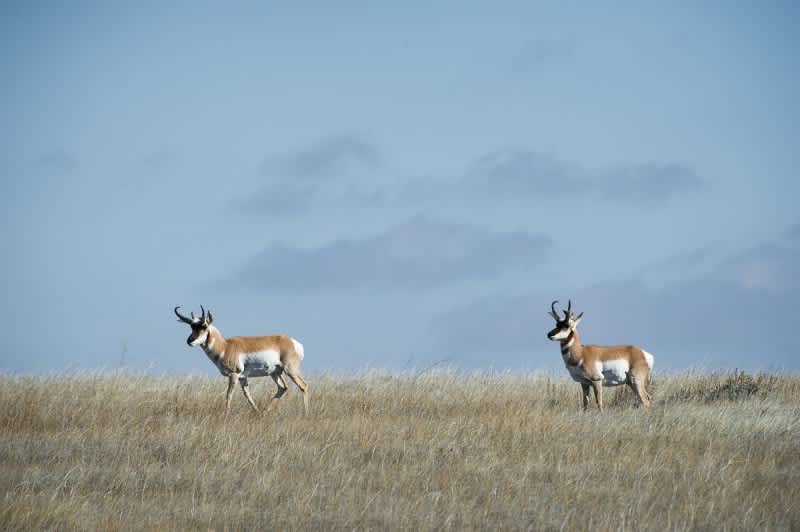3 Things to Look for to Accurately Field Judge Antelope
Nick Trehearne 11.19.14

For some, antelope are an animal that they pursue year after year. But for others, an antelope hunt is a once-in-a-lifetime event. Knowing how to judge an antelope on the hoof can be quite difficult, making it very easy to mistake 5 inches for 10. This can potentially make for a lot of ground shrinkage and disappointment.
When it comes to field judging, there are only three things to look for: length of horn, length of prong, and mass. With a few simple tricks, antelope can become one of the easiest animals in North America to score on the hoof.
Length of horn
When field judging the length of the horn on an antelope, the horns should appear to be at least 2 ½ to 3 times the length of the ear. On average, antelope typically have ears around 5 ½ inches in length, making for at horns at least 13 ¾ to 16 ½ inches long. However, this is not always a sure thing.
With many horns having a curve or hook, it is also important to take that into consideration. An antelope with a substantial curve or hook downward can add several more inches compared to an antelope with less or no curve. At further distances this can be difficult to judge, and often requires a closer look.

Although there can be exceptions to any rule, for a Boone and Crockett animal, typically you should look for an antelope with at least 15 to 16 inches of horn length.
Length of prong
When you find an antelope with large prongs, there is usually no second-guessing the size. It can never hurt to double check, but when they appear to stick out more than the width of the horn, you’ll typically have a good measurement.
When scoring the prong, they are measured from the back side of the horn to the tip of the prong. With large prongs, they will appear to stick out more than 3 ½ inches, resulting in a prong longer than 5 inches. This is usually a safe minimum when looking for a Boone and Crockett animal.
There is one more important consideration when field judging the prong. The location of the prong on the beam can equate to a much higher score overall. With prongs that are high on the horn, it is possible to get the third circumference measured below the prong where typically it is measure above. This can mean the difference between 12-inch circumferences (combined) on a high pronged antelope or 6-inch circumferences (combined) on a lower-pronged antelope. At times, this can mean the difference between a book animal or not.
Mass
Mass on an antelope can be deceiving at times, especially when the buck is alone and there is no others to compare it to. This should not hold you back from getting a good indication, however. Using the eye of the antelope is one of the best ways to determine the mass. Typically measuring around 2 inches in width, this can be used to compare to the base of the horn. A horn that appears the same width as the eye typically measures around 5 inches in circumference.
For a Boone and Crockett animal, you’d typically be looking for something a bit bigger—closer to that 7-inch mark.
When these simple tricks are used in combination, it becomes very easy to field judge an antelope. After all, a couple minutes behind the spotting scope will not make or break the opportunities to be had. That, along with the multiple encounters that generally arise during an antelope hunt, you can be sure to look over many animals and come home with a trophy you’re happy with.

